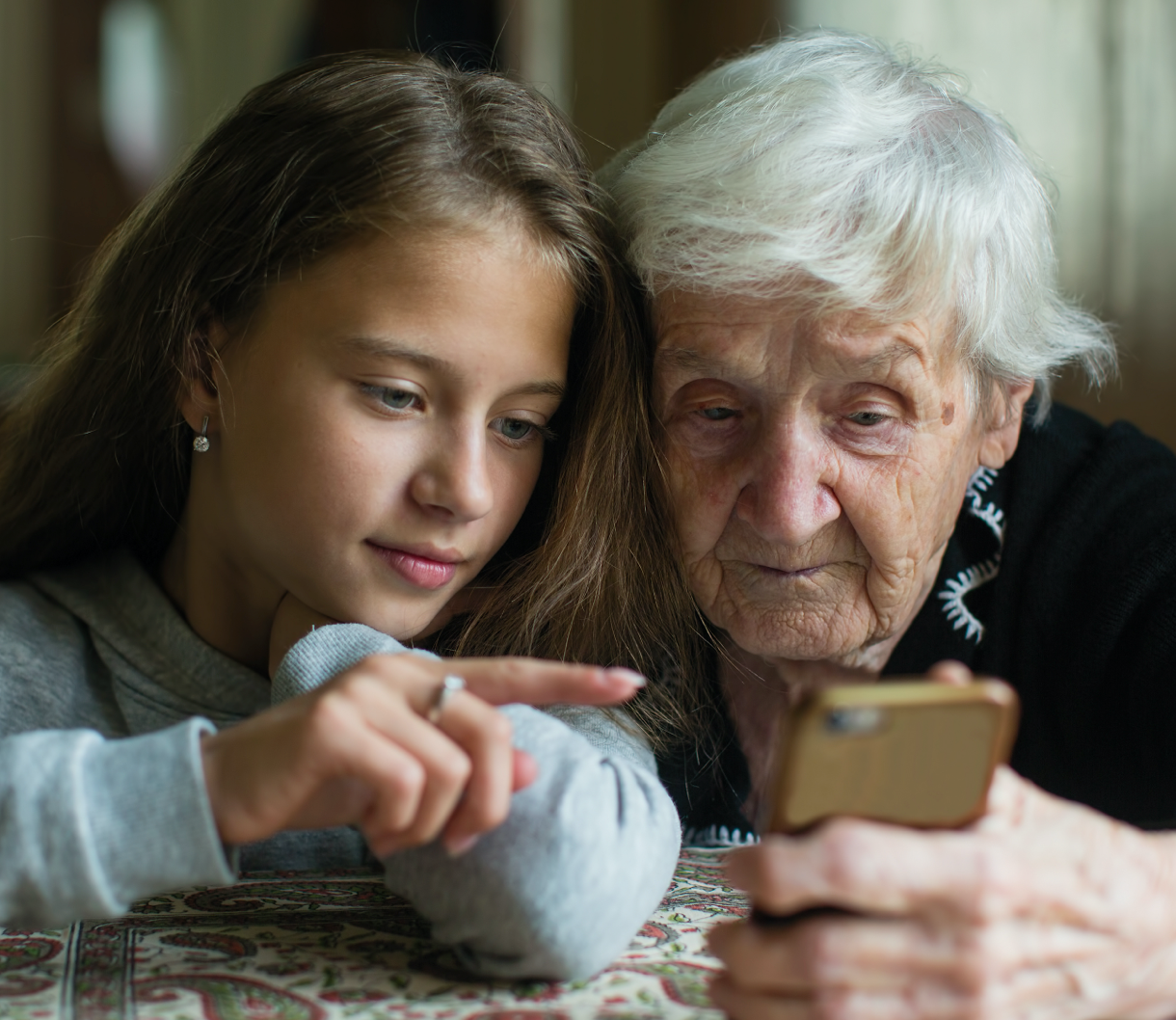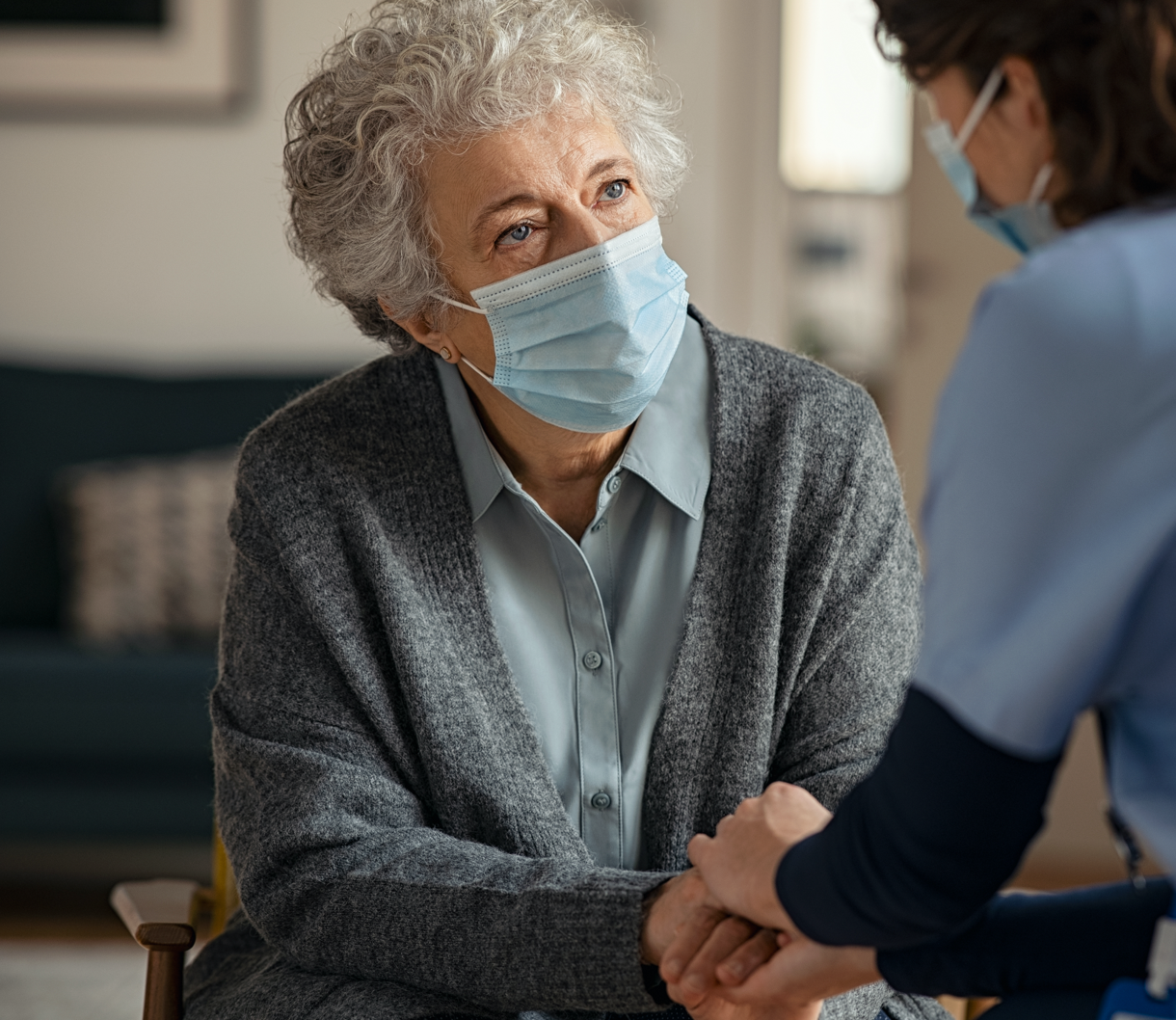A Guide for Dementia Caregivers

How to Care for Yourself When Caring for Someone Else: A Guide for Dementia Caregivers
Being a caregiver for someone who is living with dementia is an incredibly stressful job. Research shows that caregivers are at higher risk for mental and physical health issues like anxiety, depression, sleep problems, a weakened immune system, nutritional deficiencies, cognitive decline and even death.
The stress that accompanies caregiving can wreak havoc on your mind and body to the point that you yourself are at higher risk for developing dementia. The stress is compounded by the fact you are caring for someone as they are dying. Social worker and shame researcher Brené Brown was a caregiver for her mother and grandmother who both had Alzheimer’s disease. In her work, she compares being a caregiver for a child or newborn versus someone with cognitive decline. When you care for a child or newborn, you know there is a future, and you work tirelessly for that future. But when you are caring for someone with dementia, you are caring for someone with a terminal disease. Their future may only be a few short years. Caring for the dying is much different than caring for the living.
Because of the innate difficulties of caring for someone with dementia, taking care of yourself as a caregiver is incredibly important. Caring for yourself will not only make you a better caregiver, it will also ensure you stay healthy physically and mentally while you care for your loved one so that when they are gone, you have a vibrant life left to live.
When it comes to how to care for yourself as a caregiver, experts agree on three main strategies: stress management, taking care of your body, and getting as much help as possible.
Cope with Stress
Stress is more than an uncomfortable feeling. Stress affects our emotional and physical health. Too much stress can spiral us into chronic anxiety and depression. It can raise our blood pressure and lead to physical ailments. And it can increase our chances of developing dementia.
Caregivers find themselves in stressful situations daily. Your loved one may be angry at you, not sleeping well, suffering from an infection or any number of complications that make the daily life of being a caregiver difficult. In these stressful moments, it’s important to not succumb to the stress but try your best to cope with it. This will keep your mind calm and prevent your body from going into fight or flight mode, releasing hormones that add stress to the body and negatively impact your health.
Dr. Natali Edmonds, a board-certified geropsychologist who leads an online support network for caregivers called Dementia Careblazers, suggests trying the following coping mechanisms (with the apt acronym of CALM) when you find yourself feeling stressed while caring for your loved one:
C
Coping statements: This is a way to mentally reframe what is happening in the moment. Instead of saying to yourself, “This is so hard. I hate this!” Say something like, “This is hard, but I’m doing the best I can. This moment won’t last forever.” Simple mantras like this repeated over and over can have a significant impact on the neural pathways in your brain and the way you cope with and think about stress in the future.
A
Air: Deep breathing has been proven to reduce stress and increase calm in the mind and body. When a stressful situation arises, breathe in deeply through your nose for three to four counts then exhale through your mouth for six counts. This helps tell the brain you are not under threat and helps prevent your cortisol levels from spiking.
L
Leave: Sometimes the best thing you can do for your loved one during a stressful situation is leave the room. Rather than raising your voice at them or doing something you would regret, leave and collect yourself, then return when you’re in a calmer state of mind. If it would be unsafe to leave your loved one alone, Dr. Edmonds suggests leaving in your mind. Go to your “happy place,” a place that makes you feel peaceful and calm. Escape there mentally while you deal with the stress of the present moment.
M
Move: Moving your body, whether by walking, dancing, stretching or another form of exercise helps get you out of your head and into your body and the present moment. It also helps relieve tension and remove stress that’s been building up in areas of the body you may not even be aware of.
Care for Your Body
Movement shouldn’t only be practiced during or after stressful situations. Experts suggest caregivers make movement a priority as often as possible. According to the U.S. Department of Health and Human Services, adults should get at least 150 minutes of total exercise per week. Since that amount of time can be a high demand for many caregivers, the Alzheimer’s Association says even just ten minutes a day can be beneficial for your physical and mental health.
While aerobic exercise and strength training is the recommendation, any movement counts when you’re a caregiver whether that’s going on a walk, doing at-home yoga or simply dancing around in your kitchen. Ideally, this would be time spent by yourself or with a friend while you’re off duty from caregiving, but if finding that time is difficult, you could try exercising while your loved one naps or incorporating that time together by going on a walk outside, gardening or even walking around the mall if your loved one can safely leave home
Ask for Help
This is one of the most difficult yet crucial parts of caregiving: getting help. Most likely, you will have to ask for that help. Your friends and family who’ve never been caregivers simply don’t understand the load you are carrying and what you need.
As this caregiver points out, asking for help is so difficult, especially in our individualistic culture, because it can cause us to feel shame, embarrassment, pride and the fear of rejection. What if someone says no? What if my friend thinks I’m incompetent because I need help?
Dr. Edmonds says the only thing more difficult than asking for help is receiving no help at all. To encourage caregivers to ask for help, she’s created a simple step-by-step approach.
Being a caregiver is hard. So hard that your physical and mental health are put on the line. Make yourself a priority by learning to cope with stress, regularly moving your body and getting more comfortable with asking for help. If you’re still hesitant to take care of yourself as you care for someone else consider these critical questions from Dr. Edmonds: Who will take care of your loved one if your health starts to decline? What life will you have left to live once your loved one is gone if you’ve let your health decline in the years you were taking care of them?
As a caretaker, the first person you care for must be yourself. Then you will be free to care for your loved one with as little stress as possible for as long as they are with you.





